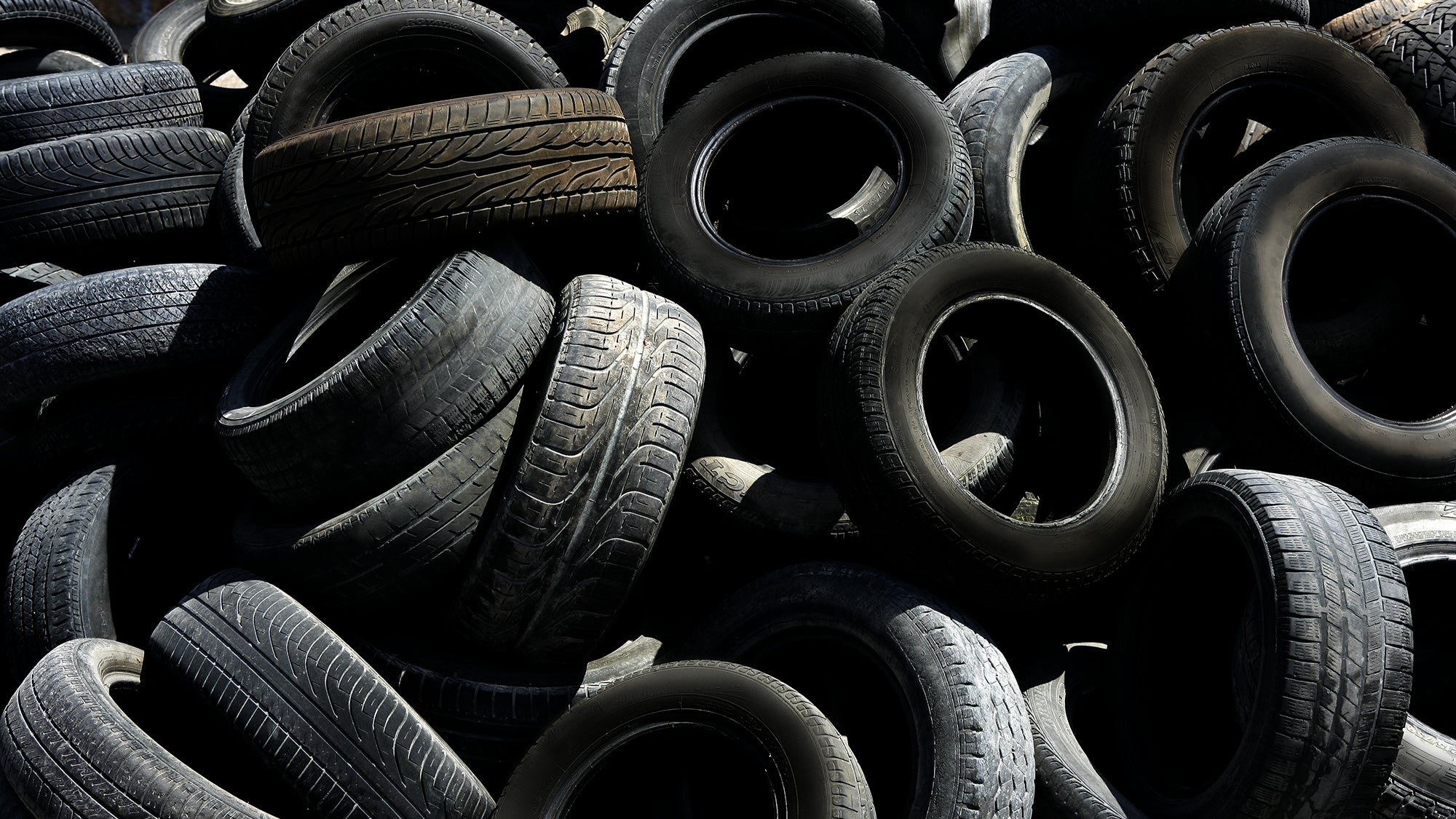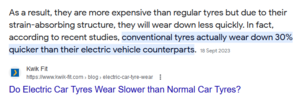15,000 electric miles without new tyres
As for the EVs on the road today, their tyre wear is nowhere near as accelerated as some naysayers suggest. James Rooney, fleet engineer at British Gas, an operator of 800 electric vans (soon to be thousands) of electric vehicles, notes that their latest electric vans – which are large, heavy vehicles with traditionally tyre-chewing front wheel drive – have done 15,000 miles and not needed tyres or brakes replaced yet (with the exception of punctures, of course).
Ryan Todd has noticed something interesting about tyre wear on his taxis. When his Nissan LEAF electric taxis are delivered to him brand new, they are typically fitted with a high quality make of tyre like Michelin. The tyres usually last between 30,000 and 36,000 miles on the rear wheels, with the fronts lasting 20,000 miles.
While it is typical for front tyres to have shorter lifespans than rear tyres, Ryan notes that his diesel taxis do tend to get an extra 5,000 to 10,000 miles of lifespan out of their front tyres. This is because the LEAF is not only front wheel drive – so the front tyres are doing the steering as well as propulsion – but has a lot more torque from its motor than a diesel car, resulting in increased wear over time. If cheaper replacement tyres are fitted to his diesel or electric taxis, their lifespan of all four tyres is typically reduced by about 5,000 miles versus the original high-quality tyres – an important lesson for any vehicle driver.
Ryan notes, however, that the 30,000 to 36,000-mile lifespan of the rear tyres on his LEAF taxis is about the same as the rear tyres on his diesel taxis, since they aren’t propelling or steering the vehicle.
If driven more leisurely, as per most cars, the lifespan of the front tyres on his electric taxis would likely increase. Given that the taxi and van fleets mentioned above are examples of fleets that are likely driven a little more harshly than the average car, the fact that they have such vastly reduced brake wear, and similar tyre wear on the rear wheels in particular, bodes very well for controlling particulate matter pollution.
Remapping the throttle of EVs to reduce the aggressiveness of the power delivery, or driving them in eco mode, will also help to extend tyre lifespan on more harshly driven vehicles. Plus, as Dundee has already shown, air quality is demonstrably better in cities that have high uptake of electric vehicles, due to a substantial net reduction in particulate matter from exhausts, tyres and brakes.
Furthermore, Cleevely EV Mobile’s high-mileage cross-country electric vans, show that the tyre lifespan of front-wheel drive EVs can be just as good as petrol or diesel cars. James notes that his MG5 EV, which is only four months old, is approaching 20,000 miles on the clock, and all tyres have plenty of tread left on them. A veteran
mechanic with an accurate judgement of component wear and remaining lifespan, James reckons he’ll get 30,000 – 35,000 miles out of all four tyres.
Additionally, many tyre manufacturers are developing special tyres for electric vehicles, which provide greater efficiency and less wear without sacrificing grip. This includes both big name tyre brands and new companies, like Enso, that have been set up specifically to tackle pollution from tyres.






